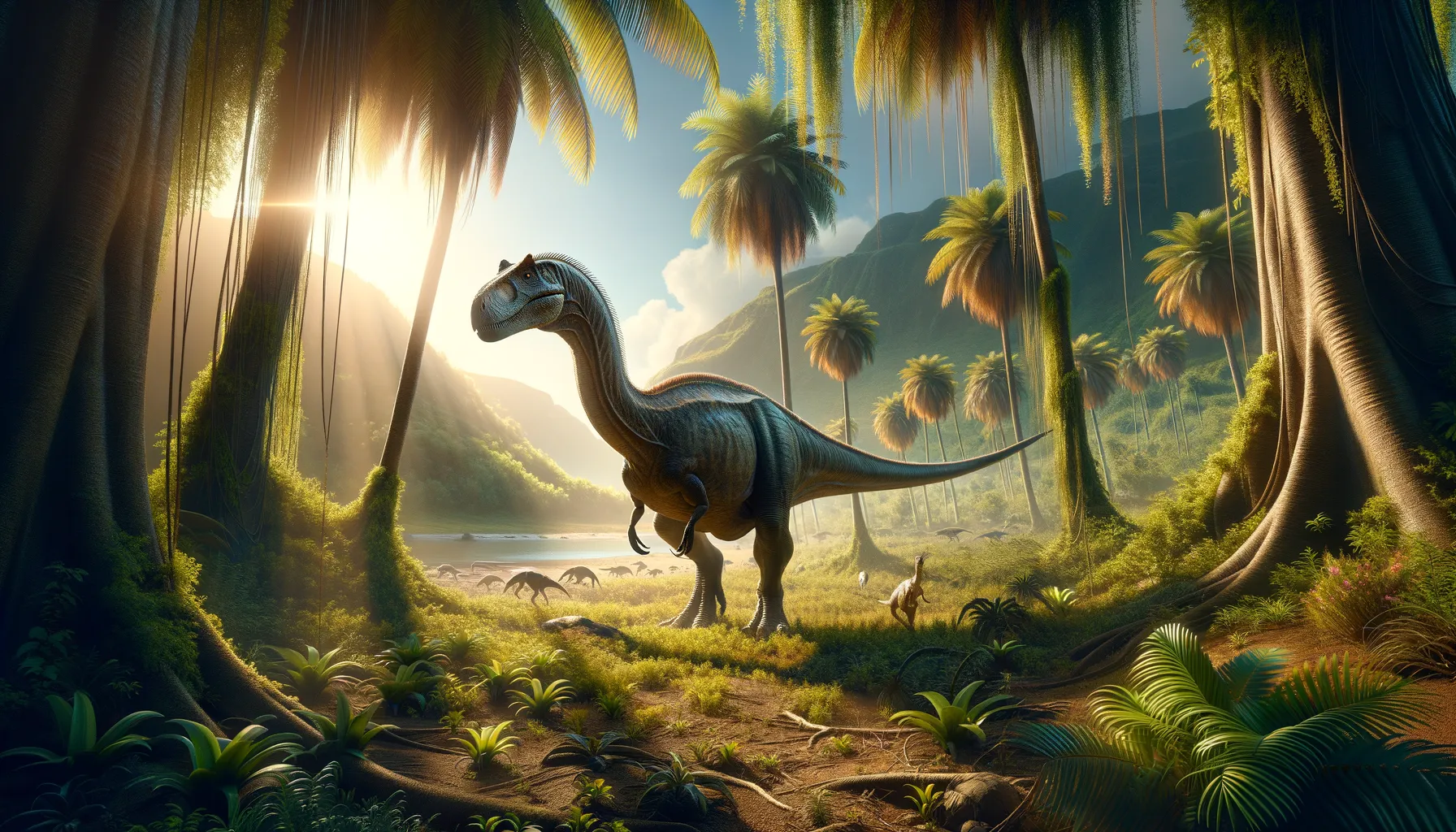
Brachytrachelopan
The short-necked giant of the Jurassic!
Period
Jurassic
Length
Approximately 10 meters long.
Height
Around 3 meters tall.
Weight
About 4 to 5 metric tons.
Brachytrachelopan was a unique sauropod dinosaur known for its short neck compared to other dinosaurs in its group. This trait suggests a different feeding strategy, possibly grazing on lower vegetation. It roamed the lush landscapes of what is now South America during the Late Jurassic period, around 150 million years ago. Its discovery has provided valuable insights into the diversity and evolution of sauropods in Gondwana.
Diet
Brachytrachelopan was a herbivore, primarily feeding on low-lying vegetation. Its short neck suggests it likely grazed on plants closer to the ground, contrasting with its long-necked relatives who reached for higher foliage.
Hunting
As a herbivore, Brachytrachelopan did not hunt and instead focused on foraging. Its lifestyle was centered around finding ample vegetation to sustain its large size.
Environmental challenges
During the Jurassic period, fluctuations in climate may have posed challenges, requiring it to adapt to changing vegetation. Predation from large carnivorous dinosaurs was also a threat. It may have relied on its size and possible herding behavior for protection.
Speed
Relatively slow due to its short neck and heavy body.
Lifespan
Estimated to live several decades.
First discovery
Discovered in 2004 in Patagonia, Argentina.
Fun Facts
- Brachytrachelopan lived about 150 million years ago during the Late Jurassic period.
- This dinosaur had a notably short neck compared to its long-necked relatives, making it quite unique among its kind.
- The name Brachytrachelopan roughly translates to 'short-necked Pan', with Pan being a satyr from Greek mythology.
- Fossils of Brachytrachelopan were discovered in Argentina, showcasing interesting diversity in dinosaur species in South America.
- Despite having a shorter neck, it was still a herbivore, feasting on the lush plants of its era.
- Brachytrachelopan's relatively small size compared to other sauropods might have helped it move faster and evade predators.
- This dinosaur is part of the Dicraeosauridae family, known for having shorter necks than the average long-neck dinosaurs.
Growth and Development
Brachytrachelopan, like many sauropods, likely went through rapid growth during its early years. Its development would have involved transitioning from smaller plant sources to larger, more fibrous vegetation as it grew. Fossil evidence suggests that it may have reached maturity after a few decades.
Habitat
This dinosaur lived in a Jurassic landscape dominated by vast forests, open plains, and river valleys. Such environments provided abundant vegetation for grazing. Its habitat would have included diverse plant life, accommodating its herbivorous diet.
Interaction with other species
Brachytrachelopan may have coexisted with other herbivorous dinosaurs, sharing grazing areas. Predator-prey interactions with theropods of the time would have influenced its survival strategies, possibly promoting social behaviors. Its environment supported a myriad of species contributing to a dynamic ecosystem.
Natural lifespan
Brachytrachelopan naturally lived for several decades.
Reproduction
Brachytrachelopan, like other sauropods, likely laid eggs in nests. Reproductive behaviors may have included certain communal nesting sites to enhance the survival of offspring. Hatchlings would have been significantly smaller than adults, requiring quick growth rates.
Social behaviour
There is potential evidence suggesting Brachytrachelopan lived in herds, which could provide protection against predators. Its social structure may have been similar to that of modern herd animals, using group dynamics for survival.
Fossil locations
Fossils of Brachytrachelopan have been predominantly found in Argentina. These findings provide insight into sauropod diversity in South America. The discovery of its remains has significantly enriched our understanding of distinctive morphologies among Late Jurassic dinosaurs.
